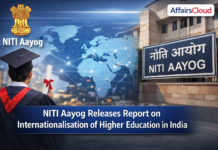 On 16th August 2024, the Indian Space Research and Organisation (ISRO) successfully launched its 3rd and final developmental flight of the Small Satellite Launch Vehicle (SSLV-D3) from the Satish Dhawan Space Centre (SDSC) at Sriharikota, Andhra Pradesh (AP).
On 16th August 2024, the Indian Space Research and Organisation (ISRO) successfully launched its 3rd and final developmental flight of the Small Satellite Launch Vehicle (SSLV-D3) from the Satish Dhawan Space Centre (SDSC) at Sriharikota, Andhra Pradesh (AP).
- It carried two satellites namely- Earth Observation Satellite (EOS-08) developed by U R Rao Satellite Centre(URSC), Bengaluru(Karnataka) and the passenger satellite, SR-0 DEMOSAT, 1st satellite from Chennai(Tamil Nadu (TN))-based startup, Space Rickshaw and successfully placed them into a 450 kilometer (km) circular orbit around the earth.
- The SSLV-D3-EOS-08 mission is expected to boost commercial satellite launch operations of NewSpace India Limited (NSIL), commercial arm of ISRO.
Note: In February 2023, ISRO launched the 2nd edition of SSLV-D2 from SDSC at Sriharikota, AP. It carried 3 satellites namely- EOS-07 and two passenger satellites: Janus-1 and AzaadiSat2.
Key Objectives:
The mission aims to design and develop a microsatellite, create payload instruments compatible with the microsatellite bus, and incorporate new technologies required for future operational satellites.
About EOS-08 Satellite:
i.It is built on the Microsat/ Indian Mini Satellite (IMS-1) bus, and has a mass of approximately 175.5 kilogram (kg) and has capacity to generate power of around 420 Watt(W), with mission life of 1 year.
ii.It carried 3 payloads namely, Electro Optical Infrared Payload (EOIR), Global Navigation Satellite System Reflectometry payload (GNSS-R), and Silicon Carbide (SiC) Ultraviolet (UV) Dosimeter.
iii.The EOIR payload is designed specifically to capture images in the Medium-Wave Infrared (MWIR) and Long-Wave Infrared (LWIR) bands, both for during the day and night.
- These images will be used for various purposes: satellite-based surveillance, disaster monitoring, environmental monitoring, fire detection, among others.
iv.The GNSS-R payload can be used for remote sensing applications such as: ocean surface wind analysis, soil moisture assessment, cryosphere studies over the Himalayan region, flood detection, among others.
v.SiC UV Dosimeter will help to monitor Ultra Violet (UV) irradiance, which is important for India’s Gaganyaan mission and to use a high dose alarm sensor for gamma radiation.
vi.The satellite carries a host of new technology developments in satellite mainframe systems like an Integrated Avionics system(IAS) – Communication, Baseband, Storage and Positioning (CBSP) Package, Structural panel embedded with PCB, embedded battery, Micro-DGA (Dual Gimbal Antenna), M-PAA (Phased Array Antenna) and Flexible solar panel and Nano star sensor etc for onboard Technology Demonstration.
About SSLV:
i.SSLV is designed to launch mini, micro, or nano satellites, weighing from 10 to 500 kg into a 500 km Lower Earth Orbit (LEO).
ii.It is a 34 meter (m) tall, 2 m diameter having a lift-off mass of approximately 120 tonnes.
iii.It is a 3-stage launch vehicle with all solid propulsion stages and liquid propulsion based Velocity Trimming Module (VTM) as terminal stage.
iv.It provides low-cost access to space, offers low turn-around time and flexibility in accommodating various satellites, and requires minimal launch infrastructure.
About Indian Space Research Organisation(ISRO):
Chairman- Sreedhara Panicker Somanath
Headquarters– Bengaluru, Karnataka
Established– 1969




